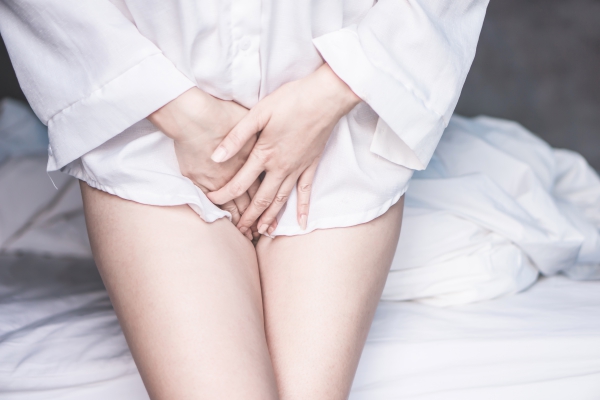Vaginal yeast infection, Vaginal candidiasis, Yeast vaginitis, Vaginal thrush, Candida, Vaginal discharge
Description : Vaginal yeast infection (also known as vaginal candidiasis or yeast vaginitis), as the name
Article Details :
What is vaginal yeast infection?
Vaginal yeast infection (also known as vaginal candidiasis or yeast vaginitis), as the name suggests, is an infection of the female genital tract, mostly the vagina, caused by a fungus. The causative pathogen is known as Candida. This causes irritation of the tissues of the vagina and vulva associated with vaginal discharge and intense itchiness.
Candida is a fungus that is normally present in the vagina. However, under some circumstances, there can be an overgrowth of the fungus causing symptoms. Vaginal yeast infection is a very common condition affecting around 3 women out of 4. Since it is common and that many women experience at least two or more episodes, it is usually a self-diagnosed condition with over-the-counter antifungals easily available. The incidence increases with increasing age, being more common among women of reproductive age. Vaginal yeast infection is not considered as a sexually transmitted disease.
What are the causes and risk factors for vaginal yeast infections?
Vaginal yeast infections are caused by a fungus known as Candida. It is an organism that is found in the normal vagina. However, some factors trigger its overgrowth resulting in bothersome symptoms. In many women, episodes of vaginal candidiasis occur without any precipitating factors. Nevertheless, the following factors can increase your risk of having the condition:
- Diabetes: If you are diabetic and have a poor control of your blood sugar levels, you are more likely to have vaginal candidiasis compared to women who do not have diabetes.
- Use of antibiotics: If you recently have used antibiotics for another condition, you are at increased risk of having vaginal yeast infections. This is because the antibiotics kills important bacteria present in the vagina. The death of these bacteria results in an overgrowth of Candida in the female genital tract.
- Increased estrogen levels: If you are pregnant or taking postmenopausal estrogen medications, you are more likely to end up with vaginal yeast infections.
- Weakened immune system: If you have a medical condition weakening your immune system or you are currently on glucocorticoid therapy or other immunosuppressant, you are more at risk of having vaginal yeast infections.
- Contraceptive devices: In some cases, devices such as vaginal sponges, diaphragms and intrauterine devices can increase the likelihood of having vaginal candidiasis.
Even if vaginal yeast infection is not a sexually transmitted disease, it commonly occurs when a woman starts having regular sexual intercourse.

What are the symptoms of vaginal yeast infections?
The following symptoms are usually present in vaginal candidiasis:
- Itchiness of the vulva (tissues found at the opening of the vagina and surroundings)
- Burning sensation of the vulva
- Soreness of the vulva
- Irritation
- Painful urination
- Painful sexual intercourse
- Thick and clumpy vaginal discharge which is associated with no or minimal odour
In many women, the symptoms may be worse during the week prior to having menstrual period. The intensity of the symptoms also vary from women to women. When your doctor examines the genitals, the vulva is often seen as inflamed and reddened. It can also be observed as swollen. A thick vaginal discharge is also observed, typically looking like cottage cheese.
How is the diagnosis of vaginal yeast infection made?
To make the diagnosis of vaginal yeast infections, your doctor will start by taking a detailed history from you. He/she will then proceed with a physical examination, mainly a gynaecological examination. In some cases, your doctor will take a sample of the vaginal discharge to confirm the diagnosis or rule out others as there are many conditions that can mimic the presentation of vaginal candidiasis.
Some women assume that their symptoms correspond to a vaginal yeast infection and take over-the-counter antifungals. However, only a few make the correct diagnosis on their own, while others wasted money, time and in some cases make the situation worse by aggravating the symptoms. This is why it is recommended to see a doctor who will make the correct diagnosis and initiate appropriate treatment.
How is vaginal yeast infection treated?
The treatment for vaginal yeast infection involves the use of antifungals. These are available in the form of either pills or vaginal treatments:
- Vaginal treatments: Vaginal treatments are those which are inserted directly into the vagina. These include vaginal creams or tablets. An applicator may be used to apply the cream or the tablet inside of the vagina at bedtime. The duration of treatment depends on the treatment modality used as well as the severity of the condition.
- Oral treatment: Fluconazole pill is the most commonly used treatment for vaginal yeast infections. It is usually taken as a single dose and rarely require a second dose 72 hours later. Some side effects that may be associated with oral fluconazole include stomach upset, headache and rash. However, these side effects are rare. It is also not recommended during pregnancy as it can have harmful effects on Read more




